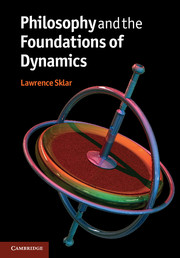Book contents
- Frontmatter
- Contents
- Chapter 1 Introduction
- Chapter 2 The pre-history of classical dynamics
- Chapter 3 The astronomical revolution
- Chapter 4 Precursors to Newtonian dynamics
- Chapter 5 The Newtonian synthesis
- Chapter 6 Philosophical aspects of the Newtonian synthesis
- Chapter 7 The history of statics
- Chapter 8 The development of dynamics after Newton
- Chapter 9 The “Newtonian” approach after Newton
- Chapter 10 From virtual work to Lagrange's equation
- Chapter 11 Extremal principles
- Chapter 12 Some philosophical reflections on explanation and theory
- Chapter 13 Conservation principles
- Chapter 14 Hamilton's equations
- Chapter 15 Canonical transformations, optical analogies and algebraic structures
- Chapter 16 The search for new foundations
- Chapter 17 New directions in the applications of dynamics
- Chapter 18 Spacetime formulations of Newtonian dynamics
- Chapter 19 Formalization: mass and force
- Chapter 20 Relationist dynamics
- Chapter 21 Modes of explanation
- Chapter 22 Retrospective and conclusions
- References
- Index
Chapter 14 - Hamilton's equations
Published online by Cambridge University Press: 05 December 2012
- Frontmatter
- Contents
- Chapter 1 Introduction
- Chapter 2 The pre-history of classical dynamics
- Chapter 3 The astronomical revolution
- Chapter 4 Precursors to Newtonian dynamics
- Chapter 5 The Newtonian synthesis
- Chapter 6 Philosophical aspects of the Newtonian synthesis
- Chapter 7 The history of statics
- Chapter 8 The development of dynamics after Newton
- Chapter 9 The “Newtonian” approach after Newton
- Chapter 10 From virtual work to Lagrange's equation
- Chapter 11 Extremal principles
- Chapter 12 Some philosophical reflections on explanation and theory
- Chapter 13 Conservation principles
- Chapter 14 Hamilton's equations
- Chapter 15 Canonical transformations, optical analogies and algebraic structures
- Chapter 16 The search for new foundations
- Chapter 17 New directions in the applications of dynamics
- Chapter 18 Spacetime formulations of Newtonian dynamics
- Chapter 19 Formalization: mass and force
- Chapter 20 Relationist dynamics
- Chapter 21 Modes of explanation
- Chapter 22 Retrospective and conclusions
- References
- Index
Summary
The Hamiltonian formalism
The nineteenth century saw several new proposals for fundamental principles to be placed at the foundations of dynamics. In 1829 Gauss offered the “Principle of Least Constraint.” Let a system of particles be connected together by constraints. Suppose each particle n starts at An and after a time interval ends up at Bn. Let Cn be the position it would have ended up at at the end of the time interval had the constraints not been imposed. Then, for the actual motion undergone, the sum of the mass of each particle times the square of the distance from Bn to Cn will be minimal over the class of all motions compatible with the constraints binding the particles together.
In 1894 Hertz offered the “Principle of Least Curvature.” Generalizations of the ordinary Euclidean notions of distance along a path and curvature of a path are constructed. It is then shown that, using these definitions, a system of particles that is isolated, that is not subject to some external force, will evolve in such a way that the motions of the individual particles will generate a path in a multi-dimensional space for the point representing the system as a whole that has, at each point, minimal curvature in the sense defined by Hertz. This principle provides a useful opening for applying methods of differential geometry in dynamics, for in a curved space the paths of least curvature, the geodesics, are objects of intensive study in differential geometry. Hertz's principle then tells us that, with the proper definitions of distance and curvature for our space, one can view the dynamical trajectory of a system as a geodesic in the representing space.
Information
- Type
- Chapter
- Information
- Philosophy and the Foundations of Dynamics , pp. 128 - 136Publisher: Cambridge University PressPrint publication year: 2012
